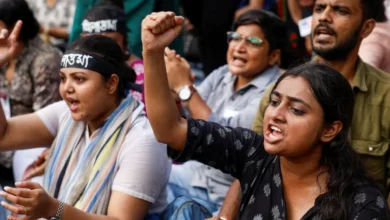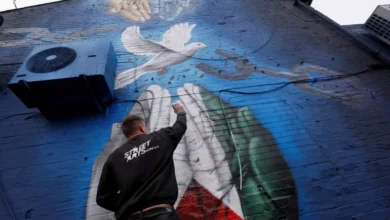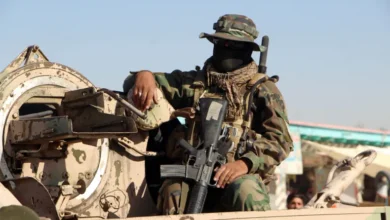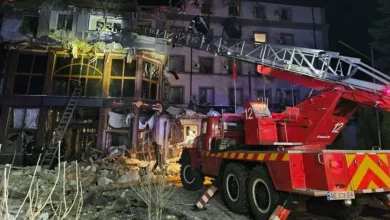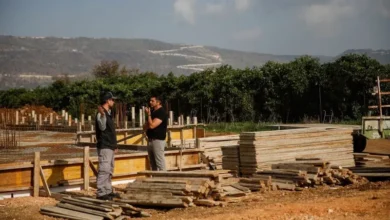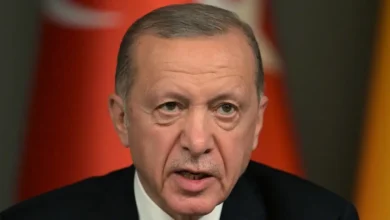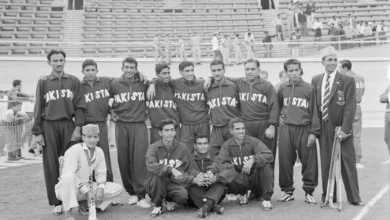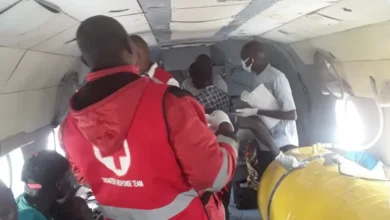Myanmar anti-coup forces target Mandalay in struggle to oust military
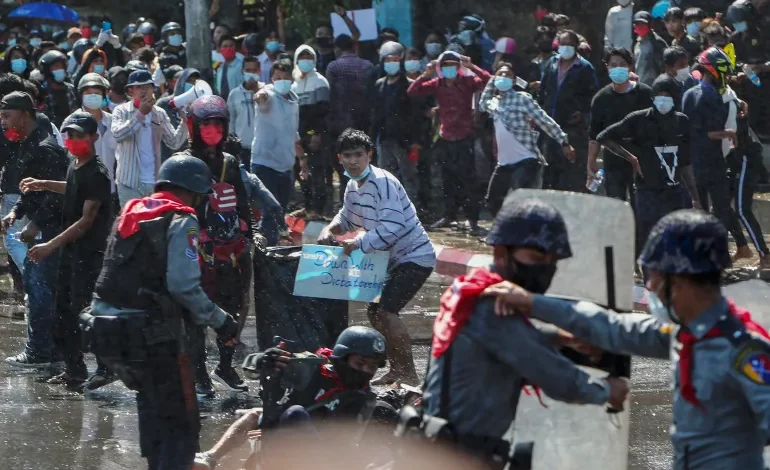
Myanmar’s second-biggest city is beginning to feel like a city under siege. But while armed groups might be at the gates of Mandalay, most residents do not consider them the enemy.
“I’ve lived in Singu since I was born and we’ve never seen anything like this before,” said Tun, a 47-year-old resident of a small town in the Mandalay region, roughly 80km (50 miles) north of the city. He asked to be identified by only part of his name for security reasons.
“At first, most residents didn’t flee from the town because we had no experience with war. When the fighting got more intense near the town, we understood we couldn’t stay here.”
While Myanmar’s borderlands, home to many of the country’s ethnic minorities, have been ravaged by conflict for decades, the mostly Bamar areas in the heart of the country had not seen conflict since World War II. That all changed when the military overthrew Aung San Suu Kyi’s democratically elected government in 2021, plunging the country into a political crisis and civil war.
Since then, the Myanmar military has suffered stunning defeats at the hands of longstanding ethnic armed groups and more-recently-established pro-democracy militias. But perhaps no development has been as unexpected as the recent capture of four towns in northern Mandalay, leaving the anti-coup alliance within striking distance of a city with a population of nearly 2 million people.Tun said he was “very happy” that resistance groups seized Singu, even though it has had a devastating effect on the town. Public services have collapsed and nearly every resident has fled as the military launches air and artillery attacks in an attempt to reclaim it.
“Everything is gone,” he said. “Our house was very precious. It was made of teak wood and it was the only thing I inherited from my parents. When I told my wife, she sobbed.”
Mandalay, Myanmar’s old royal capital and cultural centre of the Buddhist heartland, saw some of the largest protests after the coup – and some of the most brutal crackdowns. Many of those young protesters fled to territory controlled by ethnic armed groups to get weapons and training. They are now returning – armed and determined.
Pyay, 22, was a university student in Mandalay city before the coup. His parents were public school teachers who joined a mass strike of civil servants while he hit the streets to protest. On March 27, 2022 – a year after the military shot dead at least 40 civilians in Mandalay in a nationwide crackdown on opposition to its coup – he decided to join an armed resistance group called the Madaya People’s Defence Team.
On August 5 this year, he and his troops were recuperating at an outpost on the outskirts of Madaya, the last town between the anti-coup fighters and Mandalay.
“Suddenly, a military aeroplane came and we dived to crawl on the ground. The military must have got some information that there were revolutionary groups based in the area,” said Pyay, who also asked to use just part of his name for security reasons.
But instead of striking their outpost, the bombs fell directly on a village, destroying homes and injuring three civilians.
“I felt so angry,” Pyay said. “The residents are innocent and there was no reason to attack them… but they don’t dare fight us on the ground so they use artillery and aeroplanes.”
‘Operational depth’
Groups like Pyay’s are generally loyal to the National Unity Government (NUG), a parallel administration of elected lawmakers removed in the coup. But the most effective units typically operate under the guidance of an ethnic armed group. The most powerful of all may be the Mandalay People’s Defence Force (PDF), which fights under the command of the Ta’ang National Liberation Army (TNLA) and has been central to the operations in northern Mandalay.
“Without the Mandalay PDF, we can’t take Madaya,” Pyay conceded.
Anthony Davis, an analyst with the Janes defence and security publications, said the Mandalay PDF has become so powerful because it operates as “a virtual extension of the TNLA”.The TNLA fights for the autonomy of the ethnic Ta’ang people, who largely live in the mountains of northern Shan State, some of the least developed parts of Myanmar. There is a long history of Ta’ang armed movements but the modern TNLA was founded in 2009. It enjoys a close relationship with China and has seized an unprecedented swath of territory from the military in an offensive that began in October last year.
Morgan Michaels, from the International Institute for Strategic Studies, agrees with Davis.
“The Mandalay PDF’s success is directly attributable to the training, weapons, command and control, and operational depth the group has been afforded by the TNLA. The outfit was raised by the TNLA,” he said. “There is no operation under way where it’s purely the Mandalay PDF on its own. They still rely on the command and control of the TNLA.”
Both analysts agree the Mandalay PDF would need TNLA support to seize the city. But it is unclear whether the TNLA would provide such support. Its closest ethnic armed group ally, the Myanmar National Democratic Alliance Army, recently announced it had no intention to march on Mandalay, seemingly in response to Chinese pressure to rein in the conflict.
Even if the resistance does not push south towards Mandalay city, capturing the northern Mandalay region is still significant to the fight because it connects opposition-controlled territories. Davis said the “logistical and operational connectivity between now-contiguous swaths of resistance-dominated territory… will be critically important, perhaps decisive.”


